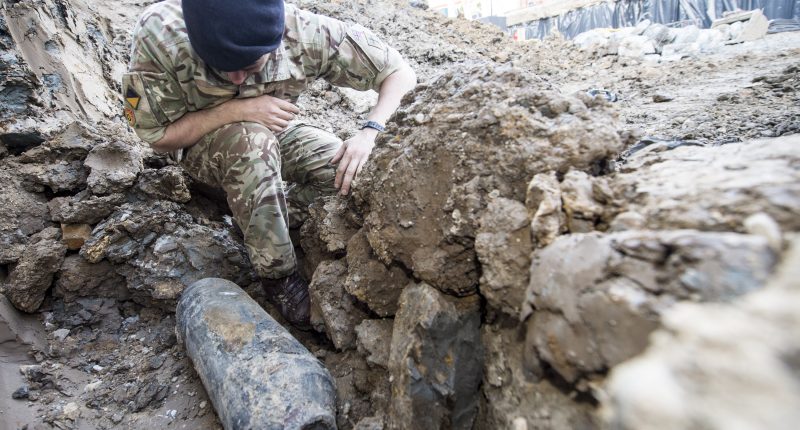AN explosive substance found inside many bombs used in the first and second world wars is increasingly more likely to explode, according to scientists.
That’s only if the unexploded bomb containing the substance is impacted.
A new study focussed on unexploded bombs from the Second World War.
It’s been published in the Royal Society Open Science journal.
The researchers found that a substance called Amatol can still cause the old bombs to explode if they’re dropped during disposal.
It went as far as to claim that unexploded bombs are actually getting more dangerous.
Amatol is a highly explosive substance and contains TNT and ammonium nitrate.
The substance wasn’t found in all the bombs in the study.
The researchers think it would be impossible to know how many unexploded bombs still contain Amatol.
Millions of tonnes of unexploded ammunition exist around the world.
Most read in News Tech
The new research could affect how unexploded bombs are processed.
“Millions of tonnes of explosive remnants of war remain in nature and their volume is continuously growing.
“The explosive legacy of wars represents an increasing threat to the environment and societal safety and security,” the researchers wrote.
The researchers want to remove the misconception that unexploded bombs get less dangerous over time.
“We investigated the high-explosive substance Amatol extracted from ageing explosive remnants of war.
“The results obtained in the analysis indicate that the high explosives in the examined specimens were generally much more sensitive to impact than previously assumed.
“Furthermore, the analysis revealed that the standardized methodology of impact sensitivity testing was insufficient for estimating the sensitivities in question, and a more careful statistical analysis is required,” they explained.











